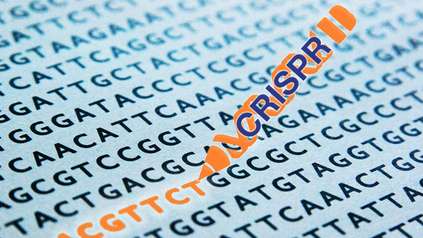‘Patchwork’ tumours prevalent across multiple cancer types
New research has confirmed that nearly all tumours contain patches of different mutations, and these mutations follow specific patterns in different cancer types.
Researchers from the Pan-Cancer Analysis of Whole Genomes Consortium, which includes those from the Wellcome Sanger Institute and Francis Crick Institute, characterised the origin and drivers of these genetic mutations across multiple cancer types to help inform how these could impact cancer treatment.
In the study, published in Cell today (7 April), researchers analysed the whole genomes of 2,658 cancer samples, spanning 38 types of cancer. They found that 95 per cent of samples contain at least one subclone, which is a patch of cells that show a large amount of genetic diversity and can therefore interfere with certain treatments. Understanding this genetic diversity could be used in the future to predict responses to treatments and enable personalised treatment plans based on the genetic makeup of the cancer.
When cancer cells divide, errors occur in the process of copying their DNA. These copying errors mean that a tumour can be made up of cells with a wide range of genetic diversity. This variation is a challenge for doctors as a treatment that works for one group of tumour cells, called a subclone, may not be effective against another. And certain subclones can initiate tumour spread or drug resistance.
Cancer researchers are working to understand what drives the evolution of these subclones, which arise at different points during the course of disease.
Researchers at the Wellcome Sanger Institute and Francis Crick Institute, as part of an international collaboration of scientists through the Pan-Cancer Analysis of Whole Genomes Consortium, have analysed tumour samples from over 2,600 patients with different types of cancer and identified a high prevalence of genetic diversity within individual tumours. Their findings confirm that, even at late stages of development, tumour evolution is driven by changes that benefit the cancer.
They also showed that the levels of and types of genetic changes varied between cancer types. And even in the same tumour, the genetic makeup of different subclones varied widely.
Researchers think that these subclones arise due to particular evolutionary pressures present at different times during tumour development or affecting different areas of the tumour. For example, to resist a particular treatment or evade the immune system.
“This research has highlighted how pervasive these subclones are across different types of cancers and we have identified cancer type-specific patterns. Being able to identify these patterns and the pressures that cause these mutations is crucial in understanding why cancers develop the way they do.”
Dr Stefan Dentro, author and post-doctoral fellow at the Wellcome Sanger Institute and the Crick
In support of this theory, the team found evidence that the evolution of subclones is affected by whether the genetic changes are helpful to the cancer or not. Subclones with advantages are more likely to develop.
“Cancers are constantly changing over time, so it’s important to recognise that a sample taken from a tumour reflects a single point in time and the cancer will continue to evolve after this. They can grow into a patchwork with sections driven by different mutations and evolutionary pressures. Understanding more about the evolution of subclones, why they develop in one direction over another, as well as how common they are, could help doctors better predict the levels of and types of variation likely to be present in a specific cancer type.”
Dr Peter Van Loo, author and group leader of the Cancer Genomics Laboratory at the Crick
Research in this area has already shown that understanding this genetic diversity can be harnessed to predict survival or relapse, which could help doctors and patients make important treatment decisions.
The researchers have created an open-access resource that documents the genetic variation they found in the subclones. Their computational methods are also available for others to analyse cancer genomes.
“We combined a number of high-quality computational methods to analyse the genetic data. Reassuringly, when we put the methods together in different ways and put them through independent simulations, the results always gave findings that fit the same story.”
Dr Maxime Tarabichi, author and postdoc in the Cancer Genomics Laboratory at the Crick
More information
This work was carried out by the Pan-Cancer Analysis of Whole Genomes consortium, including the Wellcome Sanger Institute, Francis Crick Institute, Big Data Institute at University of Oxford, Broad Institute of MIT and Harvard, University of Toronto, Vector Institute, The University of Texas MD Anderson Cancer Center, Cancer Research UK, University of Leuven, Ontario Institute for Cancer Research, Oxford NIHR Biomedical Research Centre and others.
Publication:
Dentro, S. et al. (2021). Characterizing genetic intra-tumor heterogeneity across 2,658 human cancer genomes. Cell. 10.1016/j.cell.2021.03.009.
Funding:
This research was funded by the Francis Crick Institute, which receives its core funding from Cancer Research UK, the UK Medical Research Council, and Wellcome.




